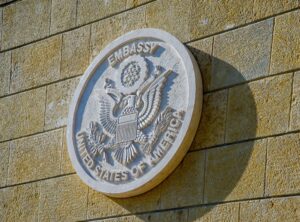The Airports Commission is seeking views on detailed air quality impact assessments it has carried out for each of the three possible options to increase the UK’s runway capacity at either Heathrow or Gatwick.
The Airports Commission is seeking views on detailed air quality impact assessments it has carried out for each of the three possible options to increase the UK’s runway capacity at either Heathrow or Gatwick.
The Airports Commission is due to make its final recommendations this summerThe Commission publically consulted on the three options — a second Gatwick runway, a third Heathrow runway, or extending the existing northern runway at Heathrow — earlier this year, but that consultation did not include detailed assessments of air quality impacts (see AirQualityNews.com story).
As such, air quality consultants Jacobs have carried out assessments of the three schemes on behalf of the Commission — led by chair Sir Howard Davies — and a the three-week consultation and accompanying report of these assessments were published on Friday (May 8).
According to the Commission, the detailed dispersion modelling in the report “provides greater assurance about the air quality implications of each proposal and the scope for mitigation”.
Jacobs’ assessments suggest that an unmitigated increase of capacity at Gatwick would have a lower impact on air quality — both in terms of pollutant concentrations and economic cost — than either of the Heathrow schemes.
The Commission is due to make its final recommendation for UK airport expansion this summer and said this additional air quality evidence will be relevant in terms of both the sustainability and economic case for each scheme.
The assessment for each scheme has been carried out for 2030, with the principal focus on concentrations of nitrogen oxides (NOx) and nitrogen dioxide (NO2), although concentrations of particulate matter PM10 have also been included.
The consultation closes at midday on Friday May 29 2015.
Gatwick
The Jacobs report concludes that the Gatwick scheme “would not affect compliance with the current NECD and Gothenburg Protocol obligations”, although it adds that should current European Commission proposals to further tighten air quality limits become reality, the UK would exceed these EU obligations “with or without” another Gatwick runway.
But while the Gatwick scheme would not cause any exceedances of the EU NO2 limit value or national objectives in the area, the report states that the scheme “would worsen air quality (in terms of annual mean NO2 concentrations) at about 21,000 properties”.
It concludes:
“The total costs of the increases in NOx and PM10 emissions over the 60 year appraisal period, based on the unmitigated change in mass emissions with the Gatwick 2R Scheme in place, are £73.6m and £246.9m respectively.”
However, the Jacobs assessment does not take into account air pollution mitigation measures proposed by Gatwick.
Heathrow
Like with the Gatwick scheme, neither of the Heathrow Airport schemes would affect compliance with EU legislation or cause any new exceedances.
However, the North West Heathrow runway scheme would cause the nearby Bath Road (A4) links to “have a marginally higher concentration in 2030 (48.7 ugm3)” for NO2 than the maximum predicted concentration in Greater London of 48.6 ugm3.
Meanwhile, the extended northern runway scheme at Heathrow would cause the Bath Road links to have an even higher concentration of 55.8 ugm3.
Both unmitigated Heathrow schemes “would thus delay Defra’s predicted date for achieving compliance with the Limit Value,” the report states.
And, a north west Heathrow runway “would worsen air quality (in terms of annual mean NO2 concentrations) at about 47,000 properties”, while the total costs of NOx and PM10 over the 60 year period would be £94.2 million and £863.5 million respectively.
In comparison, extending the northern Heathrow runway would worsen air quality at 39,000 properties, but would also “improve air quality at 6,000 properties”.
Total costs of the NOx and PM10 over the 60 appraisal period of extending the northern runway would by £69.6 million and £618.7 million for each respective pollutant, the report concludes.
AEF
The launch of the consultation was welcomed by UK-based NGO the Aviation Environment Federation (AEF), which had previously called for further analysis to be undertaken of the potential air quality impacts of building another runway at Heathrow.
Tim Johnson, AEF director, said: “We hope the announced consultation will be a thorough and in-depth analysis of the challenges faced given the risks posed to public health, and not just a kneejerk reaction to the recent court decision.
“Air pollution was a major show-stopper for airport expansion last time around and it could be again in 2015. A quick decision cannot be expected until the new government has had time to consider this and other notable gaps in the Commission’s analysis.”
Heathrow Airport announced last month a series of air pollution mitigation measures, including its own low emission zone (see AirQualityNews.com story), but Gatwick has been openly critical of Heathrow’s air quality record (see AirQualityNews.com story).













Leave a Reply